What is the best storable food for the money? This is the question we get often.
Storing emergency supplies at home for all inhabitants is essential to keeping you and your family safe in a crisis.
Following a catastrophic disaster in your area, you could find yourself without many modern-day luxuries you likely take for granted every day.
Electricity may be out for weeks, leaving you in the dark and causing water treatment plants to stop working.
Your home may suffer structural damage and be unsafe to occupy. You may need to take up shelter outdoors while enduring extreme weather conditions. You or your loved ones may suffer injuries and require immediate medical treatment when there might not be medical attention available.
You don't have to be a conspiracy theorist or doomsday believer to know that food storage is smart.
After all, food is the second most basic human need after potable water. And since most of us aren't farmers anymore — that is, we don't have the tools, knowledge, or space to grow food — we need to ensure we have a sure food source in case of an emergency.
Store foods that your family likes - variety is essential.
Learn to store food properly. Rotate and eat it. Food is your insurance; these events will not cause you or your family and friends to go hungry.
Why Store Food?
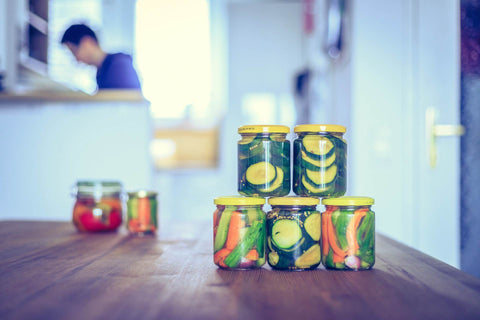
To be best prepared to use your food storage when needed, consider the types of emergencies you plan.
By yourself or with your family, brainstorm some possible scenarios where it would be necessary or useful to have stored foods on hand.
Your list will vary depending on your climate and other factors. Here are a few reasons to remember why you might want to keep a food supply.
- Food storage is a form of insurance. You buy it now in case you need it in the future.
- Depending on where you live, natural disasters threaten to impose destruction at any time. Floods, hurricanes, tsunamis, earthquakes, wildfires, blizzards — you name it. You don't want to wait until one of these is at your door to ensure you have food available.
- Food prices may always be higher than they are right now.
- Many foods have super-long shelf lives of ten years or more. You are grocery shopping for the future at today's prices.
- It's simply common sense. We save money for a rainy day. Why not something more tangible?
The Amount of Food To Stockpile Per Person
Store sufficient food to supply at least 2000 calories and 1 gallon of water each day per person for an emergency or catastrophic event. The minimum stockpiling requirement for the 72-hour emergency kit, recommended by the Federal Emergency Management Agency, is 6000 calories and 3 gallons of water for every individual.
10 Things to Consider When Stockpiling Emergency Food
Even though there's a detailed food list below— and you'll be okay if you purchase from it— it merits understanding the basics and essential considerations on what food to stockpile in an emergency.
The more you know, the simpler it is to modify or improvise.
- How many people are you feeding?
- How long will the emergency last?
- Foods are practically needed for likely emergency scenarios.
- Calories needed per day for each person based on; age, sex, and physical activity (see charts below)
- Carbohydrate, protein, and fat requirements (see chart below)
- Store foods with long or shorter shelf lives that you turn into your regular diet so you always have stock on hand.
- Plan Minimum water requirements of 1 gallon per person per day
- How will you prepare the food? Do you need extra water?
- Cooking Method(s) How will you cook your food under different emergency scenarios
- What season is it? If you lose power in the winter, you don't want to cook outside in a blizzard.
What to Always Keep in Your Pantry
As you stock food, consider your family's unique needs and tastes.
Try to include foods that they will enjoy and are also high in calories and nutrition.
Foods that require no refrigeration, preparation, or cooking are best. These items have lengthy expiration dates, so you can stash them away for long periods.
Make a list of everything in your stockpile and check expiration dates every 6 to 12 months to keep things fresh.
And don't forget to always have a can opener on hand—all that food won't be useful if you can't open it.
Peanut Butter
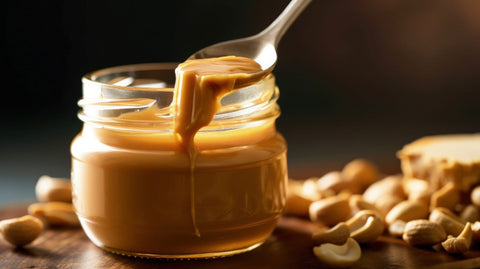
A great energy source, peanut butter is chock-full of healthy fats and protein. It's packed with calories from fat and carries some protein and carbs along for the ride.
You can eat it right from the jar with a spoon, finger, or a bark chip.
Eating peanuts and peanut butter helps control hunger without leading to weight gain.
On top of everything, it has an incredibly long shelf life, even when opened.
Rice
You can find rice in any store, and it is a cheap and healthy addition to your emergency survival foods stockpile.
It will provide you with the carbohydrates to fuel you through a disaster. Half a cup of dried rice makes 1 cup of cooked rice.
Rice will help you stretch your food supply without breaking the bank regarding survival foods.
Every time you go to the grocery store, you should pick up a large bag of rice to add to your emergency food supply.
Beans
Beans are known to be one of the best all-around survival foods.
They're rich in protein and contain other minerals, and if sealed in food-grade buckets with a small amount of dried ice, they'll stay for up to ten years.
You can buy various beans (legumes) at the grocery store in their 1-pound packages.
Make sure to store them in a cool, dry, dark location.
Canned Fruit & Vegetables
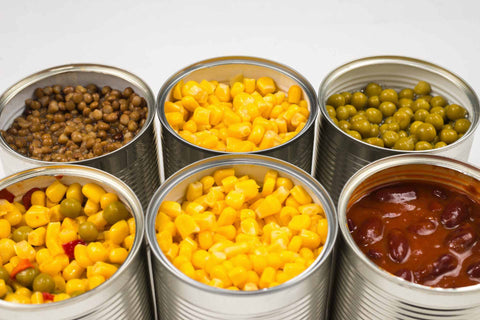
Canned varieties can provide essential nutrients when the real deal isn't an option.
These are another obvious survival food, but not as practical as many would think. They're heavy and costly for the calories they deliver.
Additionally, acidic fruits and any cans of tomatoes will not keep as long as most people think. But most canned food is good for 5+ years.
On your last trip to the grocery store before the blizzard sets in, get cans of green vegetables and low-acidic fruits like pears because those canned foods have a longer shelf life.
If you have kids, pick something they like because it will help you deal with these picky eaters when the crisis is in full effect.
Canned Meat
This is a loose category of loose-meat products, which could be anything from beef, pork, chicken, or fish…to cardboard, cornmeal, and old boots, carefully ground up and spiced to be pleasing to the palate.
No, this crap in a can isn't healthy for you. It's loaded with sodium, and God only knows what else.
But it's also tasty, high in calories, long-lasting, rodent-proof, and ready to eat. Just figure out the calories per ounce from a few contenders; the highest one should be your champion.
SPAM, sardines in oil, potted meat, deviled ham—you pick. Any way you slice it, you're in survival nirvana.
Lard
You will be doing home cooking in an emergency and need oil to get the job done.
Lard is long-lasting and high in calories.
You can use it to add a bit of flavor to your food, and you probably remember how good your grandmother's food used to taste. The great thing about lard is that it is so calorie-dense. A little bit of it can sustain a full-grown man all day.
This makes it a great food to have in emergencies, especially if you're on the move.
Pasta

Shelf-stable and available in various flavors, noodle dishes are a mainstay in survival pantries.
Pasta is the ideal long-term food storage solution thanks to its low moisture content.
Stop feeling guilty about pasta because it's good for you, stores well, and is inexpensive.
Different types of pasta will provide you with versatile options to whip up several meals.
Cornmeal
Corn has been a staple food for thousands of years.
While cornmeal and flour will keep with the right preparations, cornmeal generally has a better shelf life (up to 2 years), is packed with carbs, and is generally more flexible than flour.
Making tortillas and cornbread will ensure you have bread for other foods.
Energy Bars and Chocolate Bars
Food bars are ready-to-eat, non-thirst-provoking bars with high calories.
Choose bars that exceed the recommended daily vitamin and mineral requirements - read the labels!
These bars usually have a 5-year shelf life and provide about 1200 calories/day. A 3-day supply costs around $5.00, but you would want to supplement them with other types of food because they are 'survival' food.
Chocolate can be a quick energy source and a great morale booster while being generous in calories.
Honey

Honey is one of mother nature's greatest gifts and essential to your urban survival cache.
But it is more urgent to start stocking up on honey before other food items.
Honey will store for many years and is bound to outlast you.
Besides working as sweeteners for your food, they can also be used as antiseptics or food preservatives.
You can even preserve meat using honey.
And the great things about it? It increases energy, builds the immune system, soothes sore throats and coughs, reduces allergies, and has other benefits.
And remember, it lasts forever, so get all you can while it's still affordable.
Saltines
Although they make a terrific snack overall, saltines are also a great addition to survival kits. They make a great snack and can be used instead of bread in sandwiches.
Whole-wheat or whole-grain saltines are preferable because they include more fiber than regular ones.
Cheap saltines keep for at least three months in their original packaging. Put it in the freezer to store it for longer.
Juice
Juice from your elementary school days is perfect for a survival kit.
Especially at the start of the school year, apple juice is sometimes offered at low costs. The majority of apple juice containers have a shelf life of one year or sometimes more.
When fresh fruit is not available, it can supply the essential fruit you require.
Tea
Tea is available in bulk for a reasonable price. Keep your tea bags or loose tea in airtight containers for a long shelf life.
Coffee
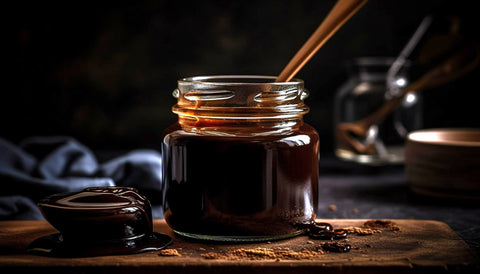
Search for coffee stock-up discounts. Use store brands instead of branded brands for your emergency pantry. Keep the coffee unopened in the original vacuum-sealed containers or cans for the best long-term storage results.
How to Store them?
Locate your long-term emergency pantry in a cool, dry, dark area. Basements are excellent choices, as are large closets and garages.
Measure and note the exact size of your storage space.
Before deciding what to store, you must be realistic and determine how much physical room you must dedicate to food storage.
Store water first.
The human body can survive weeks without food but can only go a few days without water. FEMA recommends setting aside a gallon per person per day. This can take up a lot of space if you're creating a long-term stockpile.
Limit the amount of water you need to set aside by stockpiling water purification tablets, a gallon of bleach, or a portable water purifier such as backpackers use.
Place water in a large plastic drum with a pump, in 5-gallon buckets, in gallon jugs, or individual bottles, whichever fits best into your available space.
Containerize loose bags of rice, dried beans, or packets of dried or vacuum-sealed foods. Keep them safe from vermin and insects by putting them in plastic or metal bins with sealable lids.
Organize cans and jars on shelves, lined up by type, with labels facing forward for easy rotation. Rotate out the foods in long-term storage regularly as you buy new food. This will keep your long-term stores from spoiling.
As you can see, food storage will always be a brilliant idea. Even if you start small, like with a simple 1-Month or DIY survival kit, you're making a big difference in an emergency, which will inevitably bring you peace of mind. Be a hero to yourself and your family!
How to start a stockpile on a budget?
Here are a few ways to go about building up your pantry stockpile so you may stay within your budget while stocking up on food and household essentials:
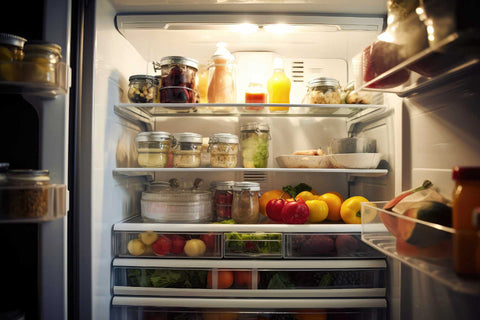
- Agree on a monthly stock-up budget in addition to a weekly grocery budget. In other words, you shop for groceries normally most weeks, but one week you do a major stock-up at a retail store to take advantage of the best deals.
- For stock-up items, boost your weekly grocery spending by $10 to $20. Spend your typical weekly grocery budget on the stuff you'll need, then set aside $10 to $20 to buy things you'll need later (especially when there's a fantastic offer).
- When you notice a great offer, note the goods you want to buy in bulk and make room in your budget for them. Maintaining a running list of things you want to buy in bulk, and when you find a great deal on one, buy a few to cross it off the list.
- Check out bulk discounts. Find out any bulk grocery deals in your area by asking around — a butcher store, a local farmer, a bulk produce box, etc. Sam's Club and Costco are two locations where you can compare costs.
- If you don't have a pantry, set your stock in order, and spread items among several cabinets. In your laundry area, remove a shelf that wasn't being used and transform it into a pantry. To see how much you had of each thing, carefully put related goods together. Additionally, everything is arranged according to date, so the products due to expire shortly are in the front, and you will add new items to the back. This is a game-changer!
- Use the freezer. You can freeze various foods; search "Can I freeze ___" to determine whether you should buy extra and store it in the freezer.
Daily Calorie Requirements For Males By Age And Activity Level
Before storing emergency food, sort out the number of calories every person needs daily.
Knowing calorie needs will simplify planning meals for short- or long-term food stockpiling.
In a long-term emergency, your activity levels will likely be far up, so focus on giving enough calories to a functioning way of life.
The following chart provides calorie counts for males by age and activity level. The Food and Drug Administration provides the information.
|
Males By Age In Years |
Sedentary* Lifestyle |
Moderate** Lifestyle |
Active*** Lifestyle |
|
2 |
1000 |
1000 |
1000 |
|
3 |
1000 |
1400 |
1400 |
|
4 |
1200 |
1400 |
1600 |
|
5 |
1200 |
1400 |
1600 |
|
6 |
1400 |
1600 |
1800 |
|
7 |
1400 |
1600 |
1800 |
|
8 |
1400 |
1600 |
2000 |
|
9 |
1600 |
1800 |
2000 |
|
10 |
1600 |
1800 |
2200 |
|
11 |
1800 |
2000 |
2200 |
|
12 |
1800 |
2200 |
2400 |
|
13 |
2000 |
2200 |
2600 |
|
14 |
2000 |
2400 |
2800 |
|
15 |
2200 |
2600 |
3000 |
|
16-18 |
2400 |
2800 |
3200 |
|
19-20 |
2600 |
2800 |
3000 |
|
21-25 |
2400 |
2800 |
3000 |
|
31-35 |
2400 |
2600 |
3000 |
|
36-40 |
2400 |
2600 |
3000 |
|
41-45 |
2200 |
2600 |
2800 |
|
46-50 |
2200 |
2400 |
2800 |
|
51-55 |
2200 |
2400 |
2800 |
|
56-60 |
2200 |
2400 |
2600 |
|
61-65 |
2000 |
2400 |
2600 |
|
66-75 |
2000 |
2200 |
2600 |
|
76 and Up |
2000 |
2200 |
2400 |
Daily Calorie Requirements For Females By Age And Activity Level
Females require fewer calories, yet just barely.
You can strategically plan your calories as though everybody in your group is male to add additional calories to your stockpile.
The following chart provides calorie counts for females by age and activity level. The Food and Drug Administration supplies the information
|
Females By Age In Years |
Sedentary* Lifestyle |
Moderate** Lifestyle |
Active*** Lifestyle |
|
2 |
1000 |
1000 |
1000 |
|
3 |
1000 |
1200 |
1400 |
|
4 |
1200 |
1400 |
1400 |
|
5 |
1200 |
1400 |
1600 |
|
6 |
1200 |
1400 |
1600 |
|
7 |
1200 |
1600 |
1800 |
|
8 |
1400 |
1600 |
1800 |
|
9 |
1400 |
1600 |
1800 |
|
10 |
1400 |
1800 |
2000 |
|
11 |
1600 |
1800 |
2000 |
|
12 |
1600 |
2000 |
2200 |
|
13 |
1600 |
2000 |
2200 |
|
14 |
1800 |
2000 |
2400 |
|
15 |
1800 |
2000 |
2400 |
|
16-18 |
1800 |
2000 |
2400 |
|
19-20 |
2000 |
2200 |
2400 |
|
21-25 |
2000 |
2200 |
2400 |
|
31-35 |
1800 |
2000 |
2200 |
|
36-40 |
1800 |
2000 |
2200 |
|
41-45 |
1800 |
2000 |
2200 |
|
46-50 |
1800 |
2000 |
2200 |
|
51-55 |
1600 |
1800 |
2200 |
|
56-60 |
1600 |
1800 |
2200 |
|
61-65 |
1600 |
1800 |
2000 |
|
66-75 |
1600 |
1800 |
2000 |
|
76 and Up |
1600 |
1800 |
2000 |
*Sedentary: Just the physical activity of independent living **Moderate: Active lifestyle activity plus 1.5 to 3-mile walk per day ***Active: physical activity of daily life plus walking more than 3 miles per day at four mph
More Food Suggestions for an Emergency

- How would you realize what is and isn't safe to eat from the fridge if the power goes out? Once your food has gone through over four hours over 40º Fahrenheit, please don't eat it. So long as frozen food sources have ice crystals or are cool to the touch, they're as safe to eat. Once it reaches room temperature, bacteria grow fast, and you must be exceptionally cautious about eating. Keep the doors shut on your fridge and freezer to slow down the defrosting process.
- If you don't have power, you still have the option to cook or heat your food. A charcoal grill or propane stove is possible (these can't be done inside as proper ventilation is essential). If you're stuck inside, keep a jar of Sterno handy: Heat in a can. It requires no power and can heat limited quantities of food in cookware.
- If your family has special necessities—for instance, you take prescriptions consistently or have a little kid—make sure to load up on those essential things, too. Keep an additional reserve of baby formula and jars of child food or a backup supply of your meds.
- If you live in great danger of flooding, consider purchasing all your storage room items in cans, as they are less inclined to be contaminated by rising waters than jars. It's best to avoid eating home-canned food sources or jarred food varieties exposed to floods because those seals are not precisely as intact.



Leave a comment
All comments are moderated before being published.
This site is protected by reCAPTCHA and the Google Privacy Policy and Terms of Service apply.